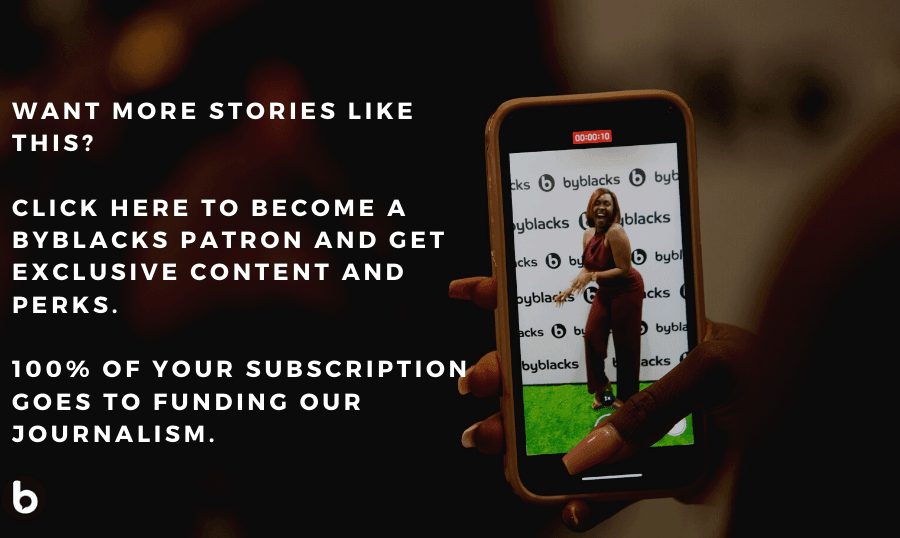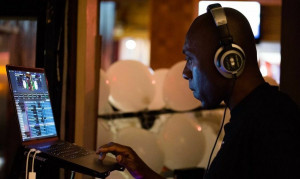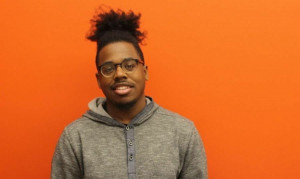Benny Bing is a self-taught, Toronto based artist of Nigerian descent, who has been capturing the natural beauty of Black bodies with his stunning portraiture for several years. He’s produced commissioned work for the likes of Dave Chappelle and The Weeknd, and his portraits have been shown at major art fairs and institutions like Art Basel Miami, The George Washington University Museum, The Henry Ford Museum, and The Norman Rockwell Museum. You might be thinking all of those institutions (with the exception of the Weeknd), are located outside of Canada. Well, there’s a story behind that. One that is likely too familiar and sits in the craw of Black artists in Canada, while playing witness to all the earnest announcements of solidarity for Black lives from whitewashed cultural institutions. Though there’s a global pandemic in the works, Bing continues to be an unstoppable force in the world of art in Toronto, whether the art Illuminati in the city care to notice or not. The upcoming exhibition of his latest collection “Bloom”, showcases Black women in a way that continues his practice of highlighting the beauty of Blackness and our humanity. He was gracious enough to sit down with me for a phone interview for ByBlacks.com.
Can you give me a quick rundown of your latest collection of works “Bloom”?
Bloom is the fourth installation in my women of colour series embracing Black beauty and its uniqueness. With this collection, I really wanted to talk about what beauty and Blackness means from a Black woman's perspective; in terms of how they feel about themselves. While you browse the website gallery, you can also listen to audio clips of the individual women I’ve based the work on, talk about what beauty and Blackness means to each of them. I want people to stop, listen, and reflect on how these women view themselves in order to get a better understanding of the unique beings we are. The most important thing to me about my whole body of work, is that it improves the way young, Black girls see themselves in the world. I want them to have a higher sense of self-worth so they are in a better position to demand equity.
What is the story of beauty and humanity you’re trying to tell about the Black body in this series, and your past work in general?
Part of telling that story is about not sexualizing these women. What I’ve noticed is a lot of portrayals of Black women, whether art or media, is very sexualized, and I wanted to portray them in a more regal way. For example, in my *headwrap series I was really interested in looking at how Black women wear headwraps, the different kinds they wear, and what cultures they come from. Each piece was named after the word “queen” in different African languages and actual African queens; so it was also educating the viewer. With this series, I just wanted to show the natural beauty of Black women and who they are, by embracing everything from their hair, the shape of their nose, and lips. It says, we will not conform to the Eurocentric definition of beauty and we’re going to keep embracing what makes us beautiful. This shows not just our beauty, but also, our humanity.
Why do women, and specifically women of colour, hold such a place of importance in your work?
Originally, my earlier works were paintings of celebrities, but I didn’t feel there was a strong message or meaning behind the work. I’ve only been painting professionally for 5 years, so at that time, I was still trying to figure out my style and direction. When I started painting Black women, I realized that not only was I good at it, but there was also a deeper meaning to the work for myself and others because of the lack of Black woman subjects in contemporary art. “Whoever controls the images, controls your self-esteem” is a quote from Dr. Leonard Jeffries. It really stuck with me in terms of understanding the importance of seeing yourself represented and playing our role in how the world sees us; the need to be the authors of our own stories. So this work allows me to tell our story by doing what I’m good at, and have important conversations around the work.
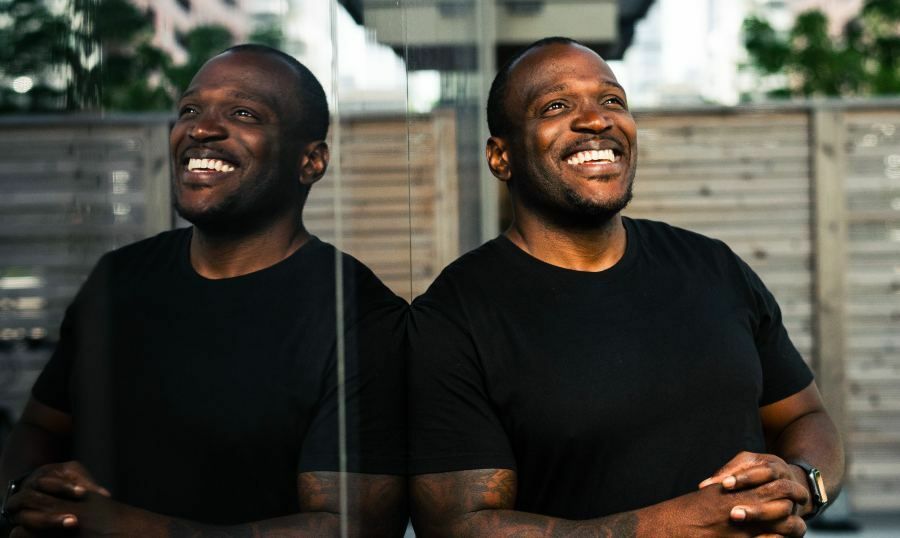
Benny Bing photographed by Aous Poules
How does your experience and perspective as a Black artist relate to what’s happening with the Black Lives Matter movement today?
I’ve always tried to emphasize Black voices and show the beauty in who we are, while using the work to discuss racial issues we have in society. I’m happy the rest of the world appears to be catching up, but I would love for the conversations to produce some action around it. If the conversations don’t produce action then, I’m sorry, the sentiment is useless.
To that point, there are a few cultural institutions in Canada (ie.The AGO & Metivier Gallery) being called out after making public statements in support of the movement to address anti-Black racism and equity, for not walking the talk. Would you say it’s a fair critique, and how do you think the institutions can move forward in a way that creates true, lasting change?
Myself and the artist **Gordon Shadrach are good friends, and we’ve always talked about and scratched our heads over this. We’re able to build careers and do phenomenal things without representation, but are not really recognized for our work in our city. I will support anyone or any movement that wants to fight that system, but personally, I’m more focused on how we disrupt the industry and find a better model. I honestly think the gallery system is dying and the people who have benefitted are trying to hang on to what’s left, which is why some people are refusing to allow us a seat at the table. How do we create a roadmap where Black artists can take that path to success without having to wait for representation? So now we’ve come to this moment where everyone wants to have conversations around race and engagement after being called out, but if you don’t review your roster to look at including locally talented Black artists to represent, then the conversation is pointless. I also think the worst thing they can do is to tokenize a Black artist just to be able to say you have one of us represented in your gallery. Your thinking should be based on an actual belief in that artist, that inspires you to take their art to the ends of the world; except that artist just happens to be Black and from Toronto. That to me is the solution. It’s not just about Black History Month, it’s about introducing us to your collectors so we can also make some money. We need some equity with regards to how much money we’re making in the industry too, which is another conversation. Whether we’re talking about collaboration with the private sector or art fairs, the actions need to go beyond representation. The way I look at it, I just need an international art dealer and 2 or 3 solid collectors, and I’m good. If you have that, you can do well without the gallery system.
So does the answer become leaving Canada?
Well, the thing is, that’s what they’ve always told us... “You’re so amazing, we think you’d do so well in the States.”
What? Art dealers have actually said that to you?
Absolutely! I hear that all the time. “You would do better in the U.S.” Yeah I know, because I have collectors in the U.S. right now, but I’m trying to show my work to high-end collectors in Toronto who don’t yet know about me. I think it’s pretty sad that Black artists have to be successful outside of Canada before we are recognized within our own city. One gallerist, who I will not name, said that to me in a way I’m sure they thought was coming from a good place; probably based on where he believed there would be more Black collectors. It’s not about Black or white collectors though, it’s about introducing the work to collectors in general. After that conversation, I got tired of having these conversations while trying to fight my way in and decided to focus on how we as Black artists can make some money in this city. Part of that strategy are things like my partnership with The Daniel’s Corp., integrating arts into the Regent Park community where I live, and working with several interior design and furniture companies in Toronto. These sorts of relationships allow me to take an alternate route to waiting for galleries. I tell my mentees that representation, if you can get it, is great, however you should also be thinking about all the ways you can showcase your work. How do we create more spaces for Black creatives in the city, and leverage all our connections to bring people into that space so they can actually see the work of upcoming artists?
Aside from Covid-19, Is the virtual gallery a way to go around the traditional gallery system?
Yes. It’s taken me about 3 solid years to grow a collector list. This collection was supposed to be showcased on a weekend in August, at a privately sponsored event in collaboration with Toronto Life. So I had very big plans for this collection this year, but Covid changed that. I had to adapt. You’ll see a lot of galleries taking the virtual route these days, so I figured the best thing to do was the same thing. The online exhibit is all on my website as a virtual reality gallery experience I’ve been working on for the last 2 months. I’m planning on passing this formula on to my mentees, so we can help promote each other as a group of Black artists in Toronto.
That’s really what it’s about. As a community we really have to work to boost each other up, and help each other grow.
Bloom Virtual & Online Exhibition: https://www.bennybing.com/
References: “ADELANI: We Own The Crown” egallery, Toronto 2017
Byron Armstrong is a writer living in Toronto, Canada who has been published online and in print, for both local and national publications. He writes short and long-form essays, reviews, in-depth profiles, and interviews. His writing focuses on the intersection between art, society, and politics. A link to all his published work can be found on his website: byron-armstrong.com.
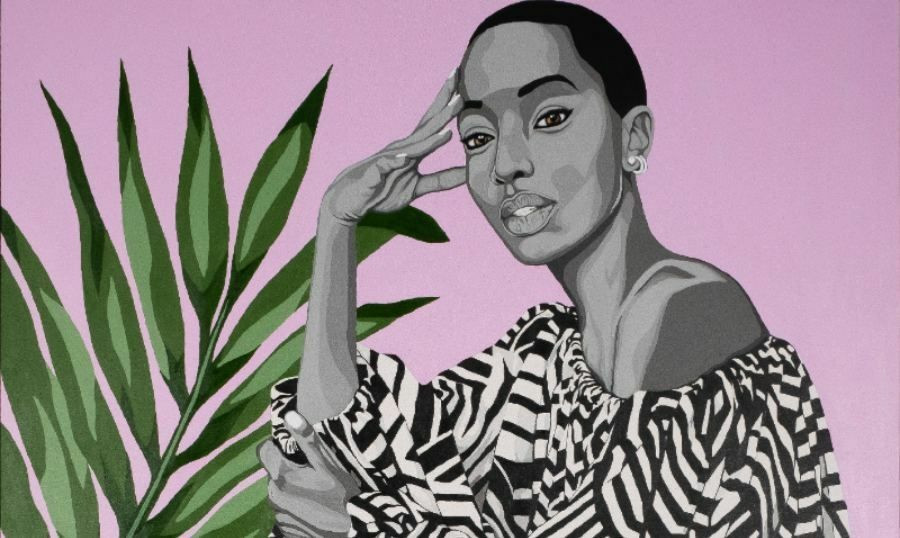
 By
By 